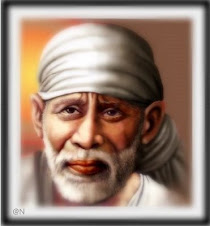
Mhalsapati, who had the benefit of forty to fifty unbroken years with Sai Baba, may be considered among the foremost of his devotees. He was the first to worship Baba, the first to greet him on his arrival in Shirdi and to address him as "Sai" (Saint). Only Mhalsapati and one other (Tatya Kote Patil) were allowed to stay with Baba in the mosque at night.
Mhalsapati was the hereditary priest of Khandoba Temple, and hereditary goldsmith of Shirdi (though later he gave up this trade). His education was minimal, but he was noted for his piousness. He also used to receive and help visiting fakirs, and sadhus such as Devidas and Janakidas. His income was so scant that he and his family would sometimes have to go without food, but absorbed as he was in his religious practices, this did not seem to disturb him unduly. Mhalsapati was so identified with his God, Khandoba, that he sometimes entered trances and talked as if possessed by him. In this way, he fulfilled the role of village shaman and villagers would put questions to Khandoba, via the medium of Mhalsapati.
In 1886 Mhalsapati was entrusted with a very important responsibility that was literally a matter of life and death, and which had far-reaching implications. Baba, who had been suffering from breathing difficulties, told him that he was "going to Allah", and that Mhalsapati should look after his body for three days. "If I do not return," said Baba, "then get it buried near the neem tree." On uttering these words, Baba passed out. Mhalsapati sat for three days with Baba's body on his lap. When village officers held an inquest and declared Baba dead, Mhalsapati remained steadfast and refused to allow them to take the body for burial. After this, Baba revived to live for another thirty-two years!
In such ways, Mhalsapati gave continued and devoted service to Baba throughout. In return, Baba guided and protected him, and kept him on a high moral and spiritual course. In his Life of Sai Baba B. V. Narasimhaswami has recorded some of the many occasions on which Baba came to Mhalsapati's aid during their long association. They include curing his wife's throat tumour, manifesting to Mhalsapati at Jejuri 150 miles away to reassure him that his party would not be touched by the plague that raged there, and warning him of the peril of coming events (such as a snake on his pathway home, a fight in a house he was to visit, an insulting situation at another, etc).
Mhalsapati survived Baba by four years. During that time he continued to sleep in the mosque, perform daily worship of Baba and Khandoba, observe mouna (silence) and sit in meditation. Baba had moulded this simple and conservative yet dedicated priest into a paragon of spiritual excellence. An indication of his attainment is the mode of his death. On an auspicious ekadasi day, Mhalsapati gave instructions to his family and told them that he would "close [his] earthly life and go to heaven" that day. With his loved ones around him chanting Ramachandra japa, and himself uttering the word "Ram", he left consciously and peacefully. It was a fitting end to a lofty life of spiritual endeavour.
Mhalsapati's remains are interred in his modest house, where his great grandson now lives. It is open to visitors and some people like to worship at the samadhi and take darshan of the things here that Baba gave Mhalsapati. One of Baba's kafnis, one of his satkas, three coins, some udi and a pair of Baba's padukas are kept here. The house is located just beyond Laxmibai Shinde's place, a little further up the lane at the next opening. The walls are painted and there is a sign above the door.







No comments:
Post a Comment